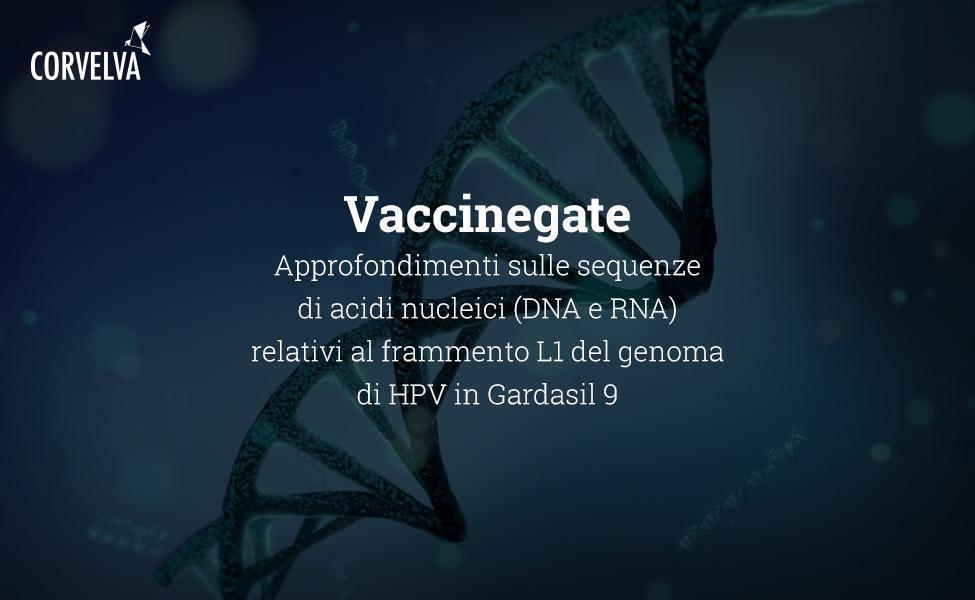Insights on nucleic acid sequences (DNA and RNA) related to the L1 fragment of the HPV genome in Gardasil 9

From the previous report on metagenomic analysis of Gardasil 9 the presence of L1 fragments of the HPV virus genome had emerged, but it was not identified which types of papilloma virus they belong to (the vaccine contains strains 6, 11, 16, 18, 31, 33, 45, 52, 58).
From the proteomics analysis it turned out that the 11 and 58 strains were missing, placing a doubt about the efficacy of the vaccine, in fact the absence could be interpreted in various:
- with the presence of the antigenic but sub-threshold protein;
- with the presence of the protein in the unidentified part because it is chemically linked to aluminum and therefore indigestible and insoluble (we have the doubt that in vitro failure to digest takes place also in vivo and this prevents the formation of specific antibodies against the protein vaccine antigen, which needs to be fragmented into short peptides in order to stimulate the correct antibody response);
- with the absence of protein.
In each case, the immune response may be partial or null (within the report a brief explanation of how the immune response occurs).
In order for the response to be humoral, which leads to the formation of antibodies as occurs after vaccination, the antigen must be digested and exposed on the membrane of the antigen-presenting cells (APC).
The vaccine preparation process involves the recombinant synthesis of the main capsid L1 proteins that self-assemble into a shell of 72 pentameric capsomers to form viral particles (VLP). The assembled pseudovirus is very similar to the native human papillomavirus and is highly immunogenic.
From our analyzes the following has been confirmed
- From the study in metagenomics of the L1 fragments of the HPV vaccine strains it has been found that the strain 58 is absent both as DNA and as RNA, this can be due for the same reasons for which the protein is not found, as also the DNA sequencing and RNA may be hampered by the bond with aluminum (as demonstrated in his studies by Prof. Lee cited later in the notes), or indeed the antigen may be missing.
- The absence of DNA and the presence of RNA for types 16, 6, 11, 33, 52, 45, 31 indicates that the strains are present and is also found in the analysis with LC-MS with protein detection, except for strain 11.
- Strain 20 is not declared in the data sheet therefore it can be considered a potential contaminant.
- Copies of viruses referred to as Human papillomavirus and Unsigned Papillomaviridae are pieces of the L1 fragments that cannot be attributed to a specific strain.
- For further information, the L1 fragments present in the greatest number of copies, ie strains 18, 16, and 6, were sequenced and were confirmed.
- The implications related to the presence of these fragments are those already reported by prof. Lee in his studies and that is that the presence of aluminum stabilizes its degradation, enhancing its ability to activate a powerful long-term inflammatory response and to be transported through the lymphatic system to macrophages in various districts of the body.
In conclusion
- Absence of strain 58 is confirmed.
- Of the strain 11, only RNA is present and with a very low number of reads (6 reads).
- 545 reads of strain 20 are a probable contamination which attests a non-compliance with respect to the technical data sheet.
Download: CORVELVA-Insights-sequences-L1-genome-HPV-Gardasil-9.pdf

